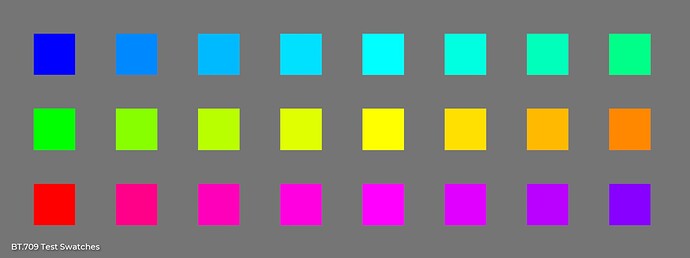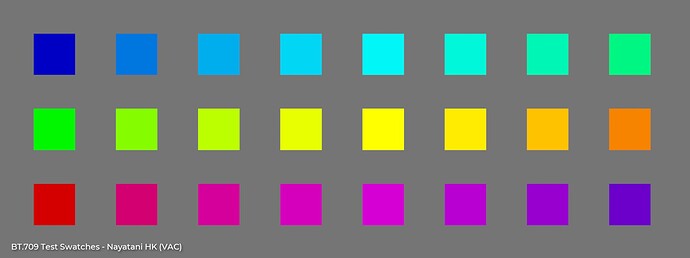The HK effect describes a perceptual phenomenon. When presented with stimulus of equal intensity, but varying saturation and color, reds blues and purples of higher saturation will appear brighter to our eyes than the emission intensity indicates.
HK effect compensation darkens these colors enough to achieve something resembling uniform brightness appearance. Here are a couple test images that might better show this than what I posted above. No display transform involved (just 2.2 power function inverse EOTF , just 24 swatches evenly spaced around the BT.709 gamut boundary, of uniform emission (max(r,g,b) == 1.0), against a middle grey (0.18) background.
In the first image, Red, Blue and Magenta swatches appear brighter than the others.
With the HK model applied, a more uniform brightness appearance is achieved.
This model was created by matching pure chromaticity samples over a uniform achromatic background, so it should probably be taken with a grain of salt for working on complex stimulus like images… but the behavior seems to be the right idea.
At least this is my basic understanding of the phenomenon. If I’m misunderstanding something here, feel free to correct or elaborate, anyone who understands this better.


